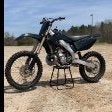
Piston ring technology has gone through a renaissance in the past 15 years. The age of the modern four-stroke ushered in the necessity for durable, highly powered machines. It only makes sense that piston rings were one of the first areas of interest. These days, powersports enthusiasts are blessed with an array of options built using space-age materials and coatings, unique geometries, and remarkable sealing technology.
Here, we break down the newest advancements in four-stroke piston rings, and how these technologies can benefit engine builders and motorcycle riders alike.
Three-Ring Piston Designs

4-stroke pistons apply to a variety of different engine types in powersports, and many of them use 3-ring designs.
Most four-stroke pistons use a three-piston ring design for effective compression sealing and oil control. The top ring serves as the compression seal. The uppermost ring’s job is to keep the combustion gases from getting past, effectively sealing the piston for maximum pressure. The second ring is responsible for catching any oil that may be on the cylinder wall. It helps scrape oil down to the third ring, which is a baffle ring that collects all of the oil. The bottom ring guides the oil through holes in the piston and down into the bottom end.
“You don’t want the oil going up, just as you don’t want compression going down. You have to seal in both directions,” states Wiseco's engineering representative.

The third ring is the oil ring assembly, which is made up of the baffle-style ring that collects oil, and two thinner rings that sandwich the baffle ring, and help keep it uniform in the ring groove.
There’s also a very detailed geometrical design for every ring in a three-ring piston layout. The top ring typically has a gentle barrel face so that the ring contacts the cylinder wall in a very narrow path. This shape lessens the amount of friction, while still effectively sealing the compression. Conversely, the second ring has an angular face.

The job of the top ring (lighter, machined color) is to seal compression, which is why it has a barrel-shaped edge face.
“Picture a jagged edge, where the sharp side is on the bottom. As it’s traveling downward along the cylinder wall it’s scraping oil, just like a windshield wiper as it’s going down,” mentions Wiseco's engineer.

The second ring's job is to scrape oil as the piston travels downward. It has a jagged notch cut on the bottom of the ring to increase oil-scraping efficiency.
Two-Ring Pistons
Honda has long marched to the beat of a different drummer. It makes sense that the Japanese manufacturer wanted to go their own way when they introduced the CRF450R in 2002. The single-camshaft layout, known in marketing speak as “Unicam,” received most of the attention; however, Honda’s engineers also developed a unique two-ring piston design. By eliminating the middle ring in a traditional three-ring piston, the goal was to limit friction in the assembly and shorten the piston height. The latter benefit being a reduction in overall engine weight (the CRF450R was the lightest 450 four-stroke in its time).
The top ring sealed compression and act as an oil scraping ring. The second ring collected the oil and sent it back into the bottom end. Honda was able to use a two-ring piston by developing technologies with the top ring that had, and continue to have, really unique geometries. Honda’s top ring seals compression and is also able to scrape oil on the down stroke. This was accomplished by putting positive twist on the piston ring.

Two-ring designs in four-stroke pistons are still very relevant, mostly in racing applications, such as with the Wiseco Racer Elite pistons you see here. They allow for less friction and weight, but require advanced ring technology.
Wiseco's engineer explains, “If the ring was sitting flat on a table, the outward edges of the ring would actually be upward. The ring isn’t technically flat, but instead cone shaped. As the piston heads upward toward compression, the ring is tilted upward and is sealing. When the compression event happens, the ring flattens out and seals solidly against the piston ring groove and cylinder wall.”
Once the piston travels downward, the lower ring starts to twist upward again, which brings the bottom edge of the ring out against the cylinder wall to scrape oil. The ring is effectively doing two jobs.

Notice the bevel cut into the inner edge of the ring. This gives Wiseco rings positive twist geometry, meaning it can tilt and flatten inside the piston ring groove to accomplish compression sealing and oil scraping with one ring.
Advancements in Materials
Piston rings are not exempt from a continued focus on utilizing space-age materials for bolstering performance. Truth be told, rings were manufactured out of relatively simple materials 25 years ago. They were either built out of cast-iron or alloy steel with a moly- or chrome-faced channel where they contacted the cylinder wall. A lot of these new ring technologies are alloy steel, with a caveat. Rather than putting chrome faces on the ring, ring manufacturers actually harden the ring through a process called gas nitriding.
“Gas nitriding is a process of introducing hydrogen to the surface, which hardens the steel,” notes Wiseco's engineer. “That makes the ring more durable, and results in better wear against the cylinder wall. The harder surface works extremely well against Nikasil cylinder bores.”

Gas Nitriding rings hardens the material, increasing durability against today's extremely hard-surfaced Nikasil cylinder walls.
Nickel silicon is an extremely hard surface. In order for the piston ring to properly seal against the cylinder wall, it, too, needs to have a very hard surface. The focus has been on making rings that are harder every year so they have better wear properties, and seal better against the cylinder wall.
Low-Tension Technology
Piston ring manufacturers have had to adapt to new-age cylinder designs, which have a tendency to distort. That’s due to motorcycle manufacturers constantly looking for ways to decrease engine weight. One way to do that is by casting the cylinders thinner and thinner. As a result, the cylinder doesn’t typically remain round or straight. This creates an issue where the piston ring becomes unseated. The solution is in using low tension rings. This technology allows the ring to conform to uneven surfaces. In essence, the ring is able to follow the undulations of the cylinder wall as it’s twisting and turning during the stroke of the piston.
Ring Land Design
Closely inspect the second ring land, which is below the top ring and above the oil ring. Notice a cut channel, which has a jagged shape that resembles a triangle. Flat on top and tapering off at the bottom, the unique shape helps assist in gathering oil as the piston is on the down stroke. This is called an accumulator groove. It acts like a piston ring that gathers oil and drives it down into the bottom end.

One some pistons, you'll find a channel cut into the second ring land. This is not a ring groove. This is the accumulator groove, which collects oil and returns it to the bottom end.
“Ring land design is extremely important in these new four-stroke engines that only use two piston rings,” states Wiseco's engineer. “You’re trying to take weight out and make things shorter and lighter. How do you do the work of three rings with only using two rings?”
The answer can be found in the shape of the ring land. This scientific design helps control oil and makes sure that it doesn’t travel up past the piston and into combustion. Anyone that has a lot of hours on their piston and rings will be able to physically see that they have a problem when they fire their bike up in the morning and little puffs of blue smoke come out of the muffler. That’s due to the parts wearing out and oil getting into the combustion area of the engine.
Lapped Rings
Take a ride in the Mr. Peabody’s WABAC machine to the late 1990s, when automobile companies discovered that piston ring manufacturers couldn’t make a ring flat enough that was necessary for ultimate sealing. They relied on placing rings on a surface plate and grinding them down in order to remove any high points or imperfections to the surface. This process created a better seal against the ring groove. Known as lapping, the technology became popular in NASCAR and Pro Stock Drag Racing, where ultimate ring seal yields horsepower gains. The lapping process takes a production piston ring and turns it into something better. This technology is now available in the high-performance world of motorcycles.
“Roughly a year ago, Wiseco introduced the Racer Elite piston kits. One of the features we have included is a lapped compression ring,” explains Wiseco's engineer. “It immediately provides better ring seal, so you don’t need any piston break-in period. Normally, the rings will need to seed themselves to the piston over time. We’ve eliminated that by having the ring lapped to the ring groove. It’s a very precise fit, and you get a really strong ring seal. In turn, horsepower is improved.”

Lapped compression rings were a recent introduction to powersports with Wiseco's Racer Elite. It achieves ultra-flatness, creating a better ring seal, translating to more compression and more power.
Wiseco was so impressed by the performance increase of lapped piston rings, they brought the technology in-house.
Find out more about how well ring lapping technology improves performance.
Wiseco's engineer states, “We have the capability to lap just about any piston ring to optimize the surface. We knew that we needed to do it all under our roof and sell it to the market. It’s interesting, because the Powersports market doesn’t know much about lapped piston rings. At the same time, it’s almost an everyday thing on the automotive side.”
The benefits of a lapped ring are immediately noticeable. Performance gains, reduced blow-by, and the lack of break-in period put the Racer Elite piston kit front and center in the high-end, premium race parts category.
Gas Porting
Gas Porting is a technique where tiny holes are drilled into the top of the piston that intersect the top of the ring groove. The technology forces combustion gases down through the holes and pushes the ring out against the cylinder wall. It’s a technique used to achieve ultimate ring seal, but it’s not meant for longevity. That’s because gas porting forces things to work against one another, resulting in the ring and piston to wear out faster. Gas porting is normally reserved for high-end applications, such as Drag Racing, because it bolsters performance (at the expense of a shortened lifespan).

Gas ports are tiny holes that allow combustion gases in through the top of the piston and out inside the compression ring groove. This forces the ring out against the cylinder wall, improving the seal.
-
 10
10
-
 1
1







Recommended Comments